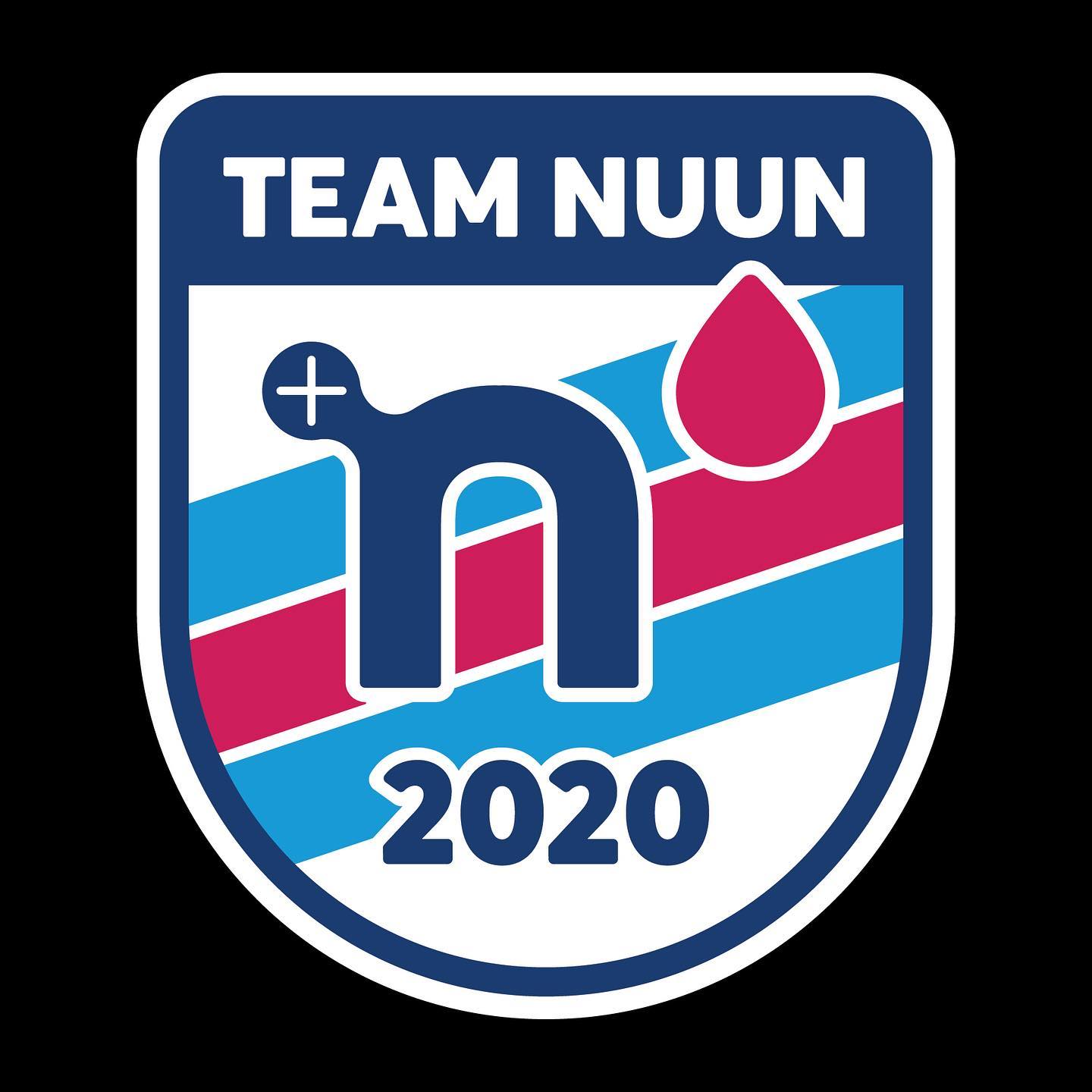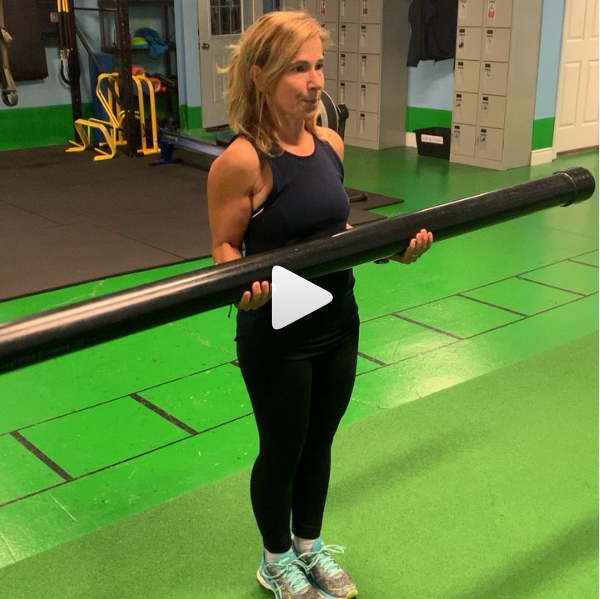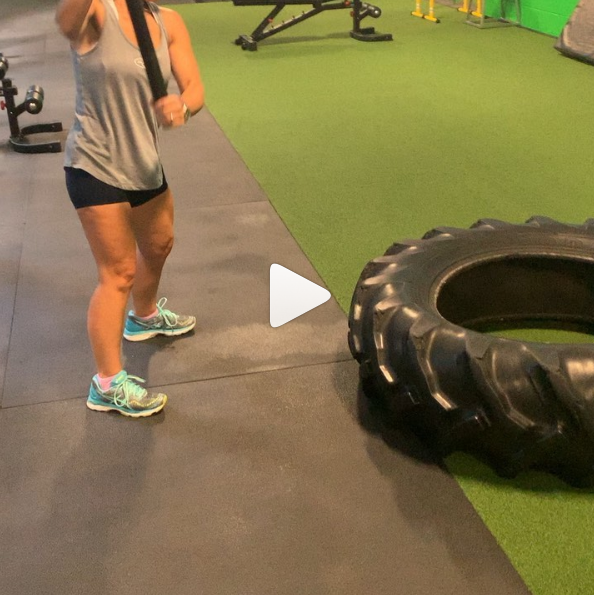Sponsors


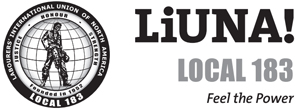





MARCH 13, 2020
When you just want to get stronger I guess you can say I become a rebel with my plank!
Why? Tyler my personal trainer @tystone4 explains:
“The renegade row or “plank row” is a multi joint movement that targets the back, shoulders and core. While holding a plank position, dumbbells are gripped and pulled to the sides in an alternating fashion.
Proper execution of this exercise includes establishing a strong base with the feet roughly shoulder width apart, maintaining core engagement as well as shoulder retraction and depression throughout the movement, keeping the hips as level as possible, and using full range of motion in elbow/humeral flexion.
Renegade rows are a great exercise for developing core and back strength as well as shoulder stability. The anti rotational core contractions activate the internal and external obliques considerably more than traditional plank variations while working the biceps and triceps as well.”
FEBRUARY 19, 2020
Remember a while back I was balancing the sloshpipe just standing? Well that was easy compared to doing lunges while holding it above my head.
Yes… Tyler has a reason for making me do this.
He explains:
“Overhead sloshpipe walking lunges are the ultimate test of shoulder, core, and lower body stability. This exercise helps develop dynamic stability and balance as well as strength. Keeping the pipe level in an overhead position requires a tremendous amount of effort, especially while lunging forward. Adequate shoulder mobility is another major factor contributing to the successful execution of this movement.”
Even though sometimes I am not very graceful when I do it – I do what I am told, because over the past year I know Tyler has been working really hard in helping me get stronger and physically prepared for the tallest mountain in the world!
I got the email and I looking forward to spreading the word on the importance of hydration. So psyched!
We are going all the way to #Everest2020
NUUN AMBASSADOR PROGRAM LAUNCH 2020
JANUARY 28, 2020
What I have been learning throughout my workouts with Tyler is that what may seem like a simple exercise/routine it really never is!
There is always more to it! Take this ‘hoping around’ one, in my words it gets my heart rate up and I really need to concentrate on my footwork.
But in Tyler’s words, these are the benefits and why he has me doing them:
“The agility ladder is a great tool for SAQ training (speed agility quickness). In most instances it is used by athletes to improve upon footwork/foot speed as well as multidirectional movement and stability.
This proves to be beneficial in the progression of directional change as well as acceleration/deceleration. Not only does this type of training help in reducing injury, it also helps develop the neuromuscular system (mind muscle connection).
By training varying foot patterns and drills the brain develops a library of functional motor patterns that can be transferred to sport and day to day living. This can help improve balance, reaction time and stability.”
DECEMBER 6, 2019
I added the stair master again to my training.
As you know I am climbing the 7 Summits for Mental Health Awareness and to raise funds for @peaksforchange .
I am trying to share with you my journey, as I train to get ready for my #everest2020 climb with @mountaintrip . It’s not easy for the short, 52 year old Portuguese grandma!
I also wanted to send a huge thank you to my main sponsor @mdcmediagroup for all the encouragement and support they show me.
NOVEMBER 25, 2019
Working out can be awkward, hard, demanding, and obviously takes time.
As we enter the last week of November, I am starting to feel the stomach butterflies I tend to feel before going to climb… I know it is #anxiety , but I guess since it’s #Everest coming up, I have reasons to start feeling it 4 months prior.
This week I start accelerating my training…even though I am still trying to get over the jet lag from #Kosciuszko…it has been hard.
So, it’s seems this exercise is great to develop strong hips, and as we (I) grow older – it’s very important! But this #exercise also has another important benefit that all us women can appreciate! 🙂
I will let Tyler, @tystone4 explain:
“Hip thrusts are arguably one of the best exercises for developing a strong and powerful posterior chain. This exercise demands a great deal of gluteal and hamstring activation for explosive extension of the hips. Cues for proper execution of this exercise include driving through the heels of the feet, maintaining an approximate 90 degree angle at the knee, as well as a tucked chin in order to ensure proper neck alignment. It is also very important to stress proper engagement of the abdominals to avoid hyperextension of the back. Not only does this exercise help produce strong and powerful hips, it’s an aesthetically pleasing booty builder!🍑”
OCTOBER 12, 2019
The rare times I went to a gym in the past , I used to see people lift these huge weights, make annoying noises and I would think to myself, why?
I still don’t like going to a traditional gym or go, but @circafit is not a traditional gym and with personal training you work on what your trainer thinks you need to, in order to help you accomplish your goals. Everyday I walk in the hallway towards their front door, it reminds me of the movie Rocky, 😂 . I will show you one day!
My ultimate current goal? #Everest2020 (words I never thought I would be saying).
So why does Tyler, @tystone4 make me do this particular exercise, which is hard by the way?
He explains:
“The Barbell squat press or “thruster” is a great full body exercise combining the two major compound movements; the barbell front squat and overhead press. This exercise is a great tool for both strength/power training as well as metabolic conditioning, contingent on loading. The prime movers include the muscles of the lower body as well as the deltoids and triceps. It is important that the core remains braced and rigid throughout the movement to ensure stability of the spine, avoiding hyperextension. Progression in load can be facilitated by the amount of power produced by the legs in the concentric phase of the movement. Explosive extension of the hips creates momentum that can be carried into the pressing portion of the lift. This evidently aids in the lockout, which can be a limiting factor for total weight moved. Use and Abuse!”
SEPTEMBER 25, 2019
When I first tried this exercise, I thought it was funny! It reminded me of chopping wood. Yes I chopped wood in Duas Igrejas with my grandparents! My parents I think where afraid I would hurt myself! I had my very own small axe- children are allowed to have them in Portugal – or they were!
As Tyler, my personal trainer explained how to hit the tire without hurting myself, I realized this was a great ‘I am having a bad day stress reliever, or when I am frustrated, depressed, anxious and just want to burn some energy’ kind of exercise!
I feel a little guilty to be honest hitting the tire – because it feels amazing! And maybe I hit the tire a little harder than I have to some days! But never the less, it’s a legit exercise!
@tystone4 explains why:
“The tire sledge exercise has a motor pattern that is very similar to that of chopping wood. It requires precise coordination of the upper body and core musculature to manipulate the steel mace (sometimes sledgehammer) for a wind up and an explosive downward strike. An absorptive object is often used to soften the blow (tractor tire in this example). Be sure to exercise extreme caution and attention when executing this movement (especially for those who are new/unpracticed). Remember to train both sides equally even though one side is usually more coordinated and hence easier than the non dominant side. Different weights of maces/hammers can be used as well as the rate of speed they are swung at, to modify for progression. This movement can be considered “full body” and is great for conditioning and developing the core as well as grip strength. Prime movers include the shoulders, arms, lats, forearm flexors and abdominals. Not only does this exercise build strength and power, it is also a great tool for alleviating daily stressors. Blow off some steam with some controlled stress relief and smash away the negative energy”
SEPTEMBER 18, 2019
I have learnt a lot in the last couple of years about physical training. About 1 year ago I realized that one cannot train properly alone. That is why I am happy that @tystone4 has taken the challenge @circafit of being my personal trainer. He ensures that what we work on during our training sessions are exercises beneficial to mountain climbing. That having me go up and down this thick rope, which he calls ‘rope repel’ is not monkeying around. It has a purpose.
So why does this exercise help me on the mountains?
Tyler Stone explains:
“The rope repel exercise is a great developer of upper body, grip and core strength. Manoeuvring up and down the rope requires use of the back musculature, posterior shoulders, biceps and flexors of the forearm as well as trunk stabilizers. Upper body development not only aids in the carrying of tools on a climb but ensures safety through ensuring adequate strength and dexterity for the navigation of ropes/lines and use of ice axes. This display of upper body strength especially proves its importance in the actions of emergency procedures such as self arrest during falls. This exercise can be progressed by slowing down the tempo of decent as well as increasing the depth of the repel. Continued advancement will work towards vertical climbing variations.”
And I also like to think if I get good at it, one day I can go climb a coconut tree in a deserted Island! 🙂 I have always wanted to do that! But first I need to continue to be focused on Everest, before I start thinking of pina coladas and deserted beaches, with white sand, palm trees and turquoise waters! 🙂
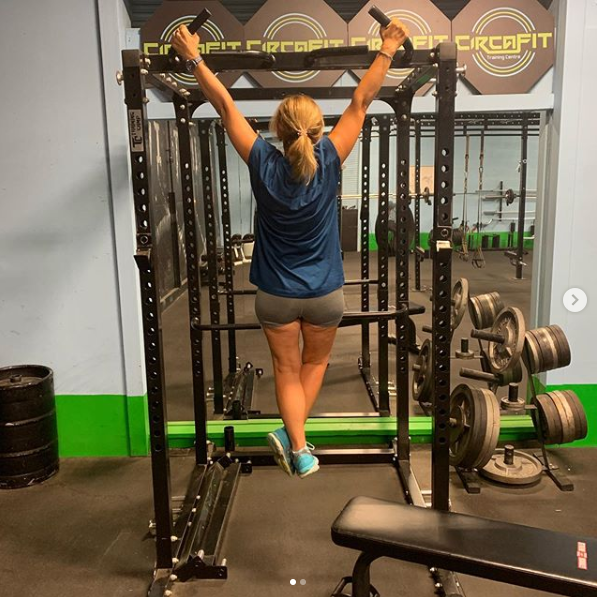
SEPTEMBER 9, 2019
What I have learned especially in the last year is that training alone was not sufficient when you are training to climb really high mountains!
When I first started training @circafit and Celeste assigned Tyler as my personal trainer, I didn’t know what to expect. And the first time we did this exercise and he said he was going to tap the stability ball lightly with his hands, I was like ‘what’? We have graduated to him kicking the stability ball, as I have learnt to trust all the exercises we work on are to make me stronger on the mountains! Tyler is the ‘boss’ during our sessions.
So why does @tystone4 kick the stability ball while I try to hold it in place? Well, Tyler explains: “The plank is one of the the most widely adopted exercises for core conditioning and the testing of trunk strength endurance. The movement demands isometric contractions of the abdominals, glutes and back muscles as well as the shoulders and quads. The stability ball plank with perturbations is a great progression from the traditional plank, requiring plenty of core and shoulder stability to maintain the equilibrium of this position. Full body tension helps keep the core engaged and rigid as the ball is moved and returned to its original position. Actively maintaining contractions throughout the body and responding with reactive “corrective contractions” to the perturbations test core engagement in different directions/planes.
Over time the intensity of perturbations and duration of time held can be increased for progression. A strong core is the base of every functional movement to be successfully built upon. Ensure sufficient breathing is executed and have fun with it!”
Keep checking in, as I share more great exercises as I train for #mounteverest!!
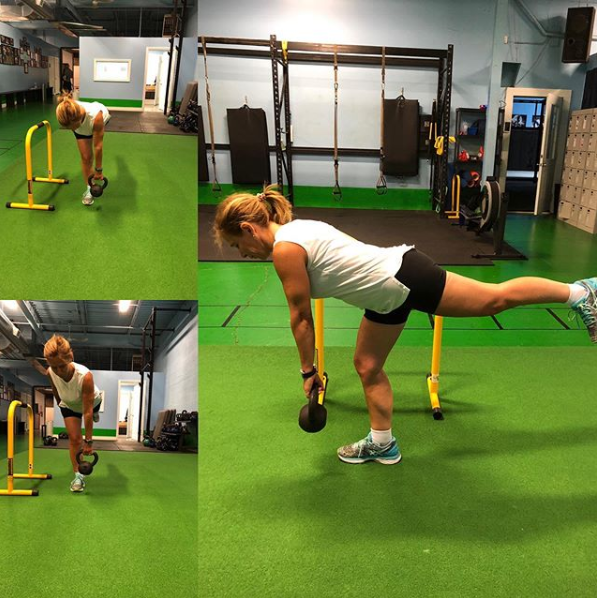
AUGUST 24, 2019
When I first climbed #carstensz I took training for granted. I trained but in reality I did not know what I was doing. Same for #Kilimanjaro and then when I climbed #Elbrus and our legend lead guide @vern.tejas was climbing backwards while encouraging us, and never missed a beat, I realized I needed to change my training. Reaching the summit is much more enjoyable when you are not completed out of breath and still have energy to come down and being fit to prevent injury is important. Before #Vinson I joined @circafit and started training with a personal trainer Tyler, and doing exercises with weird names. So, what is this exercise?
Well @tystone4 explains:
“The single leg Romanian deadlift or stiff legged deadlift challenges the stability of the ankle, knee and hip and requires a great deal of core engagement. Prime movers of this movement include the hamstrings, glutes and erectors of the spine. This exercise addresses lower extremity imbalances due to its unilateral nature and can help ensure equal strength development of the posterior chain. Incorporating this type of movement into training can prove to be very beneficial when identifying the carry over of required motor patterns and joint stability in mountain climbing. These similarities are recognized when trekking across mountainous or uneven terrain (ie. snow/ice/rock/dirt). Increased balance, strength and stability, especially on the descent of a climb, can greatly reduce the incidence of falls and sustained injury.“

